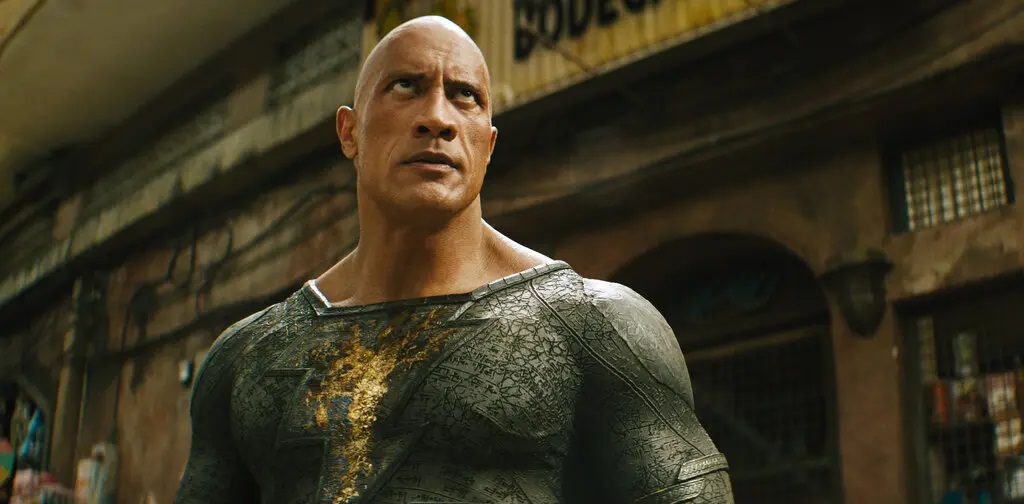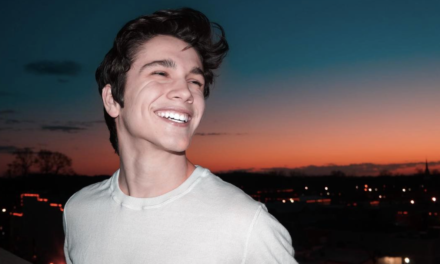Highlighted by some gratifying action that had my local movie theater both hooting and hollering, “Black Adam” works as a lighthearted superhero movie that also satisfies those looking for something deeper.
The film was released internationally Oct. 21 and was met with good audience reception. As superhero movies do, “Black Adam” opens with a scene explaining the hero’s origin. In ancient Kahndaq, the fictional, Middle Eastern setting of the film, the enslaved Teth-Adam (Dwayne Johnson) was gifted with the almighty powers of the gods. But, having used his powers for vengeance, he was imprisoned. Cut to the present day: Black Adam is freed by freedom fighter Adrianna (Sarah Shahi) and once again begins to exert his dark sense of justice onto the world.
Many of the film’s fight sequences center around a stoic Johnson battling against the Justice Society, composed of Atom Smasher (Noah Centineo), Cyclone (Quintessa Swindell), Doctor Fate (Pierce Brosnan) and led by Hawkman (Aldis Hodge). These sequences are a prime example of the film’s duality: on one hand, they work well for the viewer looking for surface-level escapism, but the driving ideas behind these fun superhero fights have standing, rather than merely serving as a vehicle for the action.
“Black Adam” differs from typical comic book films in the way it portrays its main characters. Rather than simply showing Black Adam as the “good guy” and everyone else as “bad guys,” the movie presents its characters in the gray area — it never tells us who to root for or against. The Justice Society is an American organization coming to help Kahndaq from the terrors of Teth-Adam, which would typically mean they are the “good guys,” but in “Black Adam,” the group is forced to reckon with the imperialist motives of their mission. In this way, the film’s protagonist is constantly shifting because the audience can see each character’s motives.
In a [October 14th] interview with the Wheel, Hodge and Shahi both expressed this was an aspect of the script they found compelling.
“It’s like [Black Adam] is really blurring the line between good and bad,” Shahi said. “And, as I’ve often found myself thinking, well, that’s kind of like real life, too … We’re not 100% saints all the time, we’re not 100% sinners all the time. We make choices in moments because we feel like that’s the right thing to do, whether looking back or not that was the right or wrong thing to do, you were still trying your best to achieve whatever it is that you wanted.”
Typically, superheroes are able to make these kinds of brash decisions with little consequences, but “Black Adam” takes a more nuanced approach.
“We get to have a real conversation, a substantial conversation amidst all this wonderful action, but there’s real value there because you do get to walk away saying, ‘There’s a duality here, that it’s not just right and wrong,’” Hodge said.

Dwayne “The Rock” Johnson as Black Adam. Courtesy of Warner Bros.
“Black Adam” is by no means flawless, though. The incredibly fast-paced editing was hard to keep up with, and the sound design sometimes made key dialogue legitimately difficult to hear. I also found some of the relationships unconvincing. Teth-Adam is extremely stoic and unemotional throughout the entire film, yet the almost immediate relationship he forms with Adrianna’s son, which drives large portions of the plot, remains unexplained.
While each character inhabiting the “moral gray area” offers the nuanced disposition mentioned previously, it also muddied the structure of the basic story. When I left the theater, I was unsure of who or what the antagonist of the film was. While this obviously raises interesting internal dialogue, it also made me leave the theater relatively unsatisfied. When Teth-Adam defeats the villain of the film, who appears for the first time rather late in the movie, I still felt that the film’s central conflict was unresolved.
“Black Adam” also hits many of the same thematic notes as “Shazam,” DC’s other most recent superhero origin film. It may have been because I watched “Shazam” a couple days prior in preparation for “Black Adam,” but I noticed a lot of the same running gags in the two movies. Particularly, the idea that the main character is figuring out how to be a superhero is the source for much of the attempts at humor in both films — neither hero can really figure out how to use cool, action movie catchphrases until the final, epic moment of the film.
While far from perfect, “Black Adam” still offers something rarely found in the superhero genre: a sort of self-referential critique. And not the fourth-wall-breaking, “Deadpool,” wink at the audience, but a critique of the typical recklessness and inherently imperial nature of some comic book figures. “Black Adam” offers a more sharp criticism.
“The film allows us to really have an intellectual conversation about how we deal with one another and how we move forward because, at the end of the day, we have to learn to respect one’s perspective,” Hodge said.
Daniel Rosen (he/him) is from Atlanta, Georgia, majoring in film and media. He is part of Emory's improv comedy troupe, Rathskellar. Rosen spends his free time hoping the Atlanta Hawks will finally be good this year, playing tennis and trying to watch every movie.





